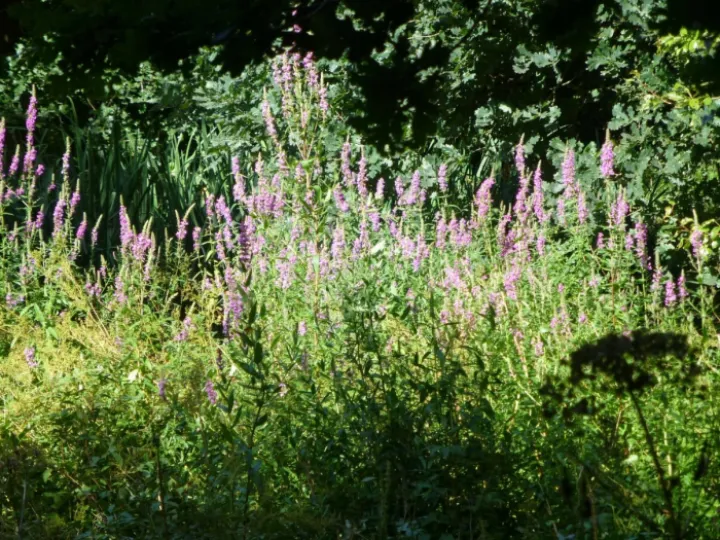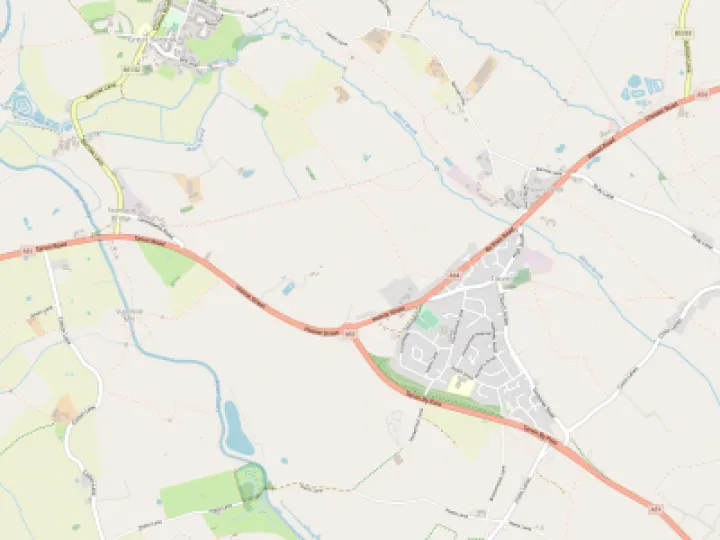Tarvin Community Woodland – Purple Loosestrife






Purple Loosestrife (Lythrum salicaria)
It was on Wednesday 6th July that TarvinOnline carried an article about the Meadowsweet that was growing in profusion in the woodland. As time has passed, the Meadowsweet has gone – but the area it previously occupied is now showing a glorious display of something else entirely – Purple Loosestrife. Impressive spikes of magenta flowers rise up to nine feet high amidst the grasses (as did the frothy white Meadowsweet earlier) and the bees and other long-tongued insects (such as moths and butterflies – including Brimstones, Red-tailed Bumblebees and Elephant Hawk-moths) are having a field day (well ... what other sort of day could they have?) amidst the proliferation of nectar-rich flowers.
We read that, "Purple-loosestrife is most frequently found in damp habitats, often in reed beds, fens, marshes and riverbanks". Like the Meadowsweet, our Loosestrife also grows so well as a consequence of our drainage scheme from the A51! It is a survivor, though, and, while the Meadowsweet cannot be relied upon to give such a wonderful display each year, the Loosestrife is to be found flowering prolifically in our woodland most summers.
It has to be admitted that it does have a tendency to become a thug and Purple Loosestrife, as an invasive species, has become the North American equivalent to Britain's imported Himalayan Balsam. While it is native to Europe, with all the natural competition that helps to keep it in check, Purple Loosestrife was introduced to North America early in the 19th Century. This was probably by means of seeds in the soil that was used as ship's ballast and thereafter discarded in ports. Once there, it has proved to be highly invasive and now presents Canada & USA with a significant problem. Many tall stems are able to grow from a single root stock, when it forms dense stands, with thick root-mats, that crowd out native plants, reduce biodiversity and clog irrigation canals. It is prolific, too – each plant can produce about 2.7 million (2,700,000) seeds each year. They are small, light and can be dispersed by both wind and water, germinating easily in moist ground, enabling rapid colonisation of new areas. Once established (and without the natural 'checks and balances' provided by its native environment) it has been proving difficult to control, let alone eradicate.
However, all is not lost. Research began in 1985 and today the plant is managed well by using a number of insects that feed on it – providing an interesting model of successful biological pest control. It appears that five species of beetle (two leaf beetles and three weevils) use purple loosestrife as their natural food source and they can do significant damage to the plant. The two species of leaf beetle are extremely effective in wiping out a stand of purple loosestrife, being capable of defoliating up to 100% of the plants in an area. However, the real answer to invasive plants is to leave plants (and this applies to animals, too) growing in the area to which they are native. That way, their enemies are already on hand to keep them in check!
Quick Links
Get In Touch
TarvinOnline is powered by our active community.
Please send us your news and views.



